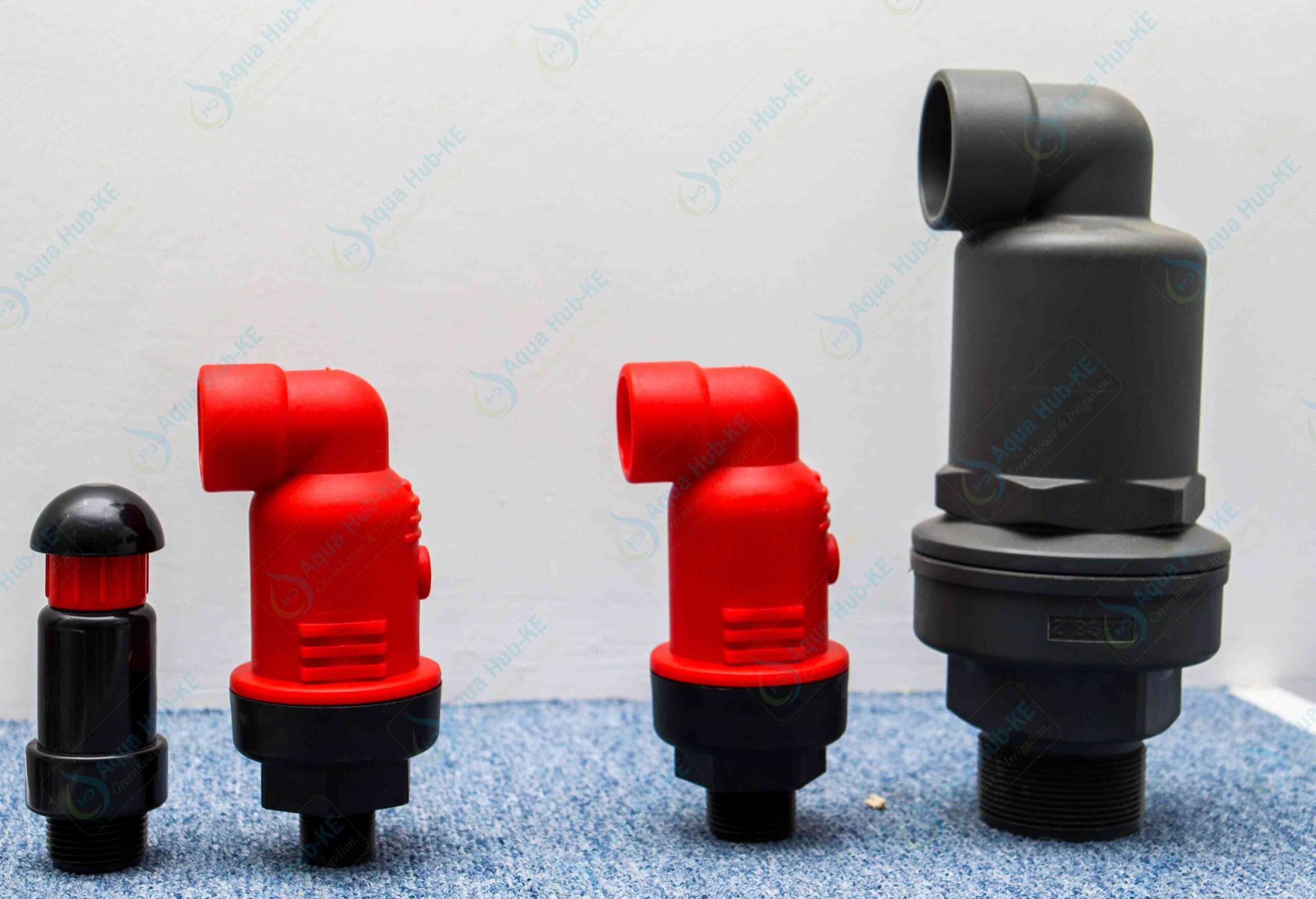Air Valves for Irrigation

Air release valves are types of valves for removing air bubbles that often get trapped in pipe sections of irrigation systems.
The use of an air release devices prevents pipe damage, bursts, leakages, or detachment of connected parts. It is a measure to ensure the long-term durability of an irrigation system and at the same time ensure a smooth supply of water.
Eventually, your crops continue enjoying adequate water for growth and hence proper growth.
Why Air Valves are Essential in Irrigation Systems
There is a high risk of pressure and flow rate altercation due to air that occupies space in the pipelines. It forces the system to use more energy to supply water from the source due to a low surface area remaining for water to move.
How Air Valves Work
Accumulation of gas or bubbles in water causes a pressure buildup inside the pipe. The pressure force opens the air vent thus releasing air bubbles out of the irrigation system.
Types of Air Valves
Air release Valves
Consists of small orifices, weighted floats, and leverage systems that remove air removal when the water rises in the cavity.
Available in diameter sizes of 15 to 250 mm.
Air Vacuum Valves
Normally have a bigger orifice that has a maximum size of 20 inches. Designed to allow efficiency in the removal of large air bubbles when the pump is on. They are important to prevent a vacuum condition in drainage and pipelines. They normally open, automatically shut off as water levels rise, maintaining optimal system conditions.
How to Install Valves
Air valves are best operational when installed at the head or high points of an irrigation system.
Installing them near the head of the pipeline is one of the finest methods to do it.
Sometimes valves need their vault since people prefer to install pipes underground. In these situations, the connecting pipes must be the right size for the circumstances around the water flow.
Additionally, the effects of stretched release valve piping on water surge levels can vary, therefore studies may be necessary to determine the necessary amount of pipe.
To help the air allowance in the valve that runs along the pipeline, we also recommend a riser pipe that is larger than the valve inlet.
What Shows that Your Valves are Faulty?
- Stagnant water accumulating on the sections of the irrigation system near the air release valve
- Some components of the irrigation system such as sprinkler heads not functioning
- Low water pressure in the sprinkler heads and emitters.
- Water not reaching other parts of the irrigation system.
- Constant running of water in one or more sprinkler heads or emitters
How to monitor and Maintain a Relief Valve
Once a year, you can check the valve’s usefulness by using the ditch valve.
The ditch valve’s air release component may need to be maintained or repaired if it exhales air. If not, you should monitor the valve’s rate of air expulsion during pump operation to ensure that there is no needless seepage.
How Much does it Cost?
Depending on the size, an air valve can range from KES 500 to KES 5000 at Aqua Hub Kenya.
Purchase Irrigation Valves at Aqua Hub
Aqua Hub is the best supplier of air valves in Kenya. We have quality valves for effective irrigation systems at friendly prices.
Call 0790719020
